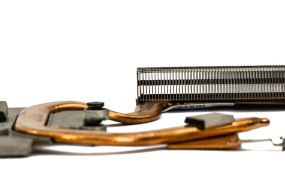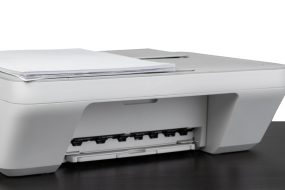
Welcome to our comprehensive guide on the components of a computer processor. In this article, we will delve into the intricate details of a processor’s anatomy, exploring the various components that work together to facilitate the seamless execution of tasks on your computer. Whether you’re a tech enthusiast, a computer science student, or simply curious about the inner workings of your device, this guide will provide you with valuable insights into the fundamental building blocks of a computer processor.
The Core Components of a Computer Processor
1. The Arithmetic Logic Unit (ALU)
The Arithmetic Logic Unit, or ALU, is one of the core components of a computer processor. It performs mathematical operations, such as addition, subtraction, multiplication, and division, as well as logical operations, including comparisons and bitwise operations. The ALU is responsible for executing the instructions provided by the computer program, making it an integral part of the processor’s functionality.
2. The Control Unit (CU)
The Control Unit acts as the brain of the computer processor, coordinating and controlling its operations. It interprets and decodes instructions fetched from the computer’s memory, directing the flow of data within the processor and ensuring that each operation is executed in the correct sequence. The Control Unit plays a crucial role in synchronizing the activities of other components, enabling the smooth operation of the processor.
3. The Register File
The Register File consists of a set of small, high-speed storage units within the processor. These registers store temporary data and instructions needed for immediate execution. They provide quick access to frequently used information, reducing the processor’s reliance on external memory and improving overall performance. The Register File acts as a temporary workspace for the processor, allowing it to efficiently manipulate and process data.
4. The Cache
The Cache is a small but incredibly fast memory that lies between the processor and the main memory. It serves as a buffer, storing frequently accessed data and instructions, which can be quickly retrieved by the processor. The Cache significantly reduces memory access latency, enabling faster execution of instructions and improving overall system performance. It acts as a bridge between the processor and the memory, ensuring efficient data retrieval.
Actionable Tips for Optimizing Processor Performance
1. Optimize Your Code: Writing efficient and well-optimized code can have a significant impact on processor performance. Utilize appropriate data structures and algorithms, minimize redundant computations, and optimize loops to make the most efficient use of the processor’s resources.
2. Upgrade Your Cooling System: Overheating can severely affect processor performance. Ensure that your computer’s cooling system is functioning properly and consider upgrading it if necessary. Proper cooling prevents thermal throttling and allows the processor to operate at its optimal speed.
3. Keep Your System Drivers Updated: Outdated or incompatible system drivers can lead to performance issues. Regularly update your system drivers to ensure compatibility and take advantage of performance enhancements provided by the manufacturers.
Frequently Asked Questions
Q1: How does the ALU perform complex mathematical operations?
The ALU utilizes a combination of basic arithmetic and logical operations to perform complex calculations. By breaking down complex operations into simpler ones, the ALU can efficiently execute a wide range of mathematical tasks.
Q2: What is the difference between primary memory and cache memory?
Primary memory, or RAM, serves as the main storage area for data and instructions, while cache memory acts as a high-speed buffer between the processor and primary memory. Cache memory stores frequently accessed data, allowing the processor to quickly retrieve information, thereby reducing memory access latency.
Q3: Can I upgrade the components of a computer processor?
While it’s not possible to directly upgrade individual components of a processor, you can upgrade the entire processor itself. This typically involves replacing the existing processor with a newer, more powerful one that is compatible with your computer’s motherboard.
Q4: How does the Control Unit synchronize processor operations?
The Control Unit ensures the synchronization of processor operations by decoding and executing instructions in the correct sequence. It coordinates the flow of data between different components and ensures that each operation is executed at the appropriate time, maintaining the integrity of the overall system.
Q5: What role does cache memory play in gaming performance?
Cache memory plays a vital role in gaming performance by storing frequently accessed game data and instructions. This allows for faster retrieval, reducing loading times and providing a smoother gaming experience.
Conclusion
In conclusion, understanding the components of a computer processor is essential for gaining insight into how these complex devices function. From the Arithmetic Logic Unit and Control Unit to the Register File and Cache, each component plays a crucial role in ensuring efficient processing and optimal performance. By following the actionable tips provided in this guide, you can optimize your processor’s performance and enhance your overall computing experience. So, dive into the world of computer processors and unlock the full potential of your device.









